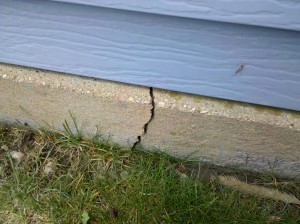
Are you concerned about a crack in your foundation?
Florida homeowners can encounter minor structural damage and foundation problems in their home or business due to a number of factors including poor soil conditions. It is quite common for buildings in Florida to shift and sink and can cause cracks in the foundation. Fortunately, most of these cracks are related to the curing process or to common settling. Sometimes they can be a sign of a more serious problem. Are you seeing these warning signs in your home? If you are, it could be that your home’s foundation is in need of repair.
- Visible exterior cracks
- Cracks or uneven sidewalks or driveway
- Drainage not flowing away from the home
- Unlevel fascia boards
- Yard slopes toward the home
- Large trees with roots close to the foundation
- Cracks in the interior walls
- Floors are visibly not level
- Window is not square
- Wall corners not square
- Gaps on the top of interior doors when closed
- Doors jam and/or won’t latch
Foundations are not uniform, and conform to the structural standard of the year in which they were built. In accordance with our standards of practice, we identify foundation types and look for any evidence of structural deficiencies. However, cracks or deteriorated surfaces in foundations are quite common. In fact, it would be rare to find a raised foundation wall that was not cracked or deteriorated in some way, or a slab foundation that did not include some cracks concealed beneath the carpeting and padding.
While we are not specialists, we will certainly alert you to any suspicious cracks if they are clearly visible during our inspection. Buy Your Side Home Inspections has been inspecting homes and businesses in Central Florida, and specifically Osceola County, for many years. Our certified professionals are constantly being educated in the changes in our industry and bringing that expertise and knowledge to you, your family and your business. Call Buy Your Side for your next inspection. 407.780.0911.
Read More
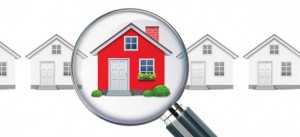
Appraisal vs. Inspection
Appraisal vs. Home Inspection. Although they appear to be the same – they serve specific purposes. The appraiser is concerned with the VALUE of the property based on a set of criteria such as the local real estate market, home’s age and features. The home inspector is more concerned with the CONDITION and FUNCTION of critical systems of the property based on standards and codes and can make recommendations for repairs.
Here are a few things the Appraiser does:
- Measures the exterior of the home taking photos of the outside including any improvements that add value such as landscaping, driveways, pools, workshops, etc.
- Notes property topography, drainage, boundaries, adjacent land uses, and potential hazardous conditions
- Lists the material and quality of construction for the home and any detaching buildings.
- Notes any damage observed such as settlement, rotting wood, broken windows, curled roof shingles, and possible termite damage
- Takes pictures of the interior of the home noting room placement, quality of construction and improvements and updating such as appliances, home entertainment, security systems, etc.
Here are some of the main components inspected by the Home Inspector:
- Walls, floors, columns, ceilings, roof structure
- Exterior walls, doors, windows, garage door operators, decks, balconies, steps, railings
- Vegetation, grading, driveways, walkways
- Eaves, soffits, and fascias
- Roof coverings, flashing, skylights, chimneys, and roof penetrations
- Drainage systems – gutters and downspout
- Interior plumbing drain, waste and venting systems
- Interior water supplies, distribution system, and fixtures
- Hot water systems
- Plumbing shut off valves
- Electrical main entrance and distribution panels
- Connected devices and fixtures
- GFCI and AFCI receptacles
- Smoke detectors
- Location of panel boxes
- Heating & Cooling equipment, operating and safety controls
- Chimney, flue, and vents
- Fireplaces
- Condensation lines
- Ceilings, Walls, Floors, Steps, Railings
- Counters and cabinets
- Doors and windows
- Insulation
- Ventilation of attics
- Venting systems and fans
- Dishwashers, ovens, ranges, disposals, and microwaves
Having a full Home Inspection done by Buy Your Side Home Inspections will take all the guesswork out of buying or selling a home. It removes the potential “surprise” factor, and with the economy as it is these days, that’s a wise action to take!
Call Tommy Joynes of Buy Your Side Home Inspections at 407.780.0911 today!
Read More
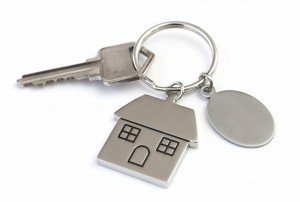
Keys to Your New Home
Congratulations – you’re a homeowner. You have the keys to your new home. Now, what should you do to protect your investment? Here are a few recommendations for routine maintenance to help maintain your property. This list is not intended to be comprehensive but provides a good foundation. For more home maintenance tips and energy saving advice contact your Buy Your Side Home Inspections 407.780.0911.
As soon as you move in:
- Change all locks on exterior entrances to your home.
- Locate the main shut-offs to plumbing, electrical and heating systems.
- Replace batteries in all smoke detectors and install fire extinguishers near stoves, in garages, and near fireplaces / wood stoves.
- Address any items on the Home Inspection Report that require immediate attention.
On a monthly schedule:
- Test all GFCI (ground fault circuit interrupter) devices.
- Check your fire extinguishers to be sure they are fully charged.
- Tighten loose toilets and repair/replace faulty flush mechanisms.
- Ensure water is not leaking during showering.
- Check all plumbing fixtures for leakage and repair or replace as needed.
- Check grout and caulk in bathrooms.
- Replace or clean heating and cooling air filters.
- Secure gutters and downspouts and remove any debris.
Twice a year in the Spring and Fall:
- Check your roof coverings, chimney and flashings for damage.
- Check for evidence of leakage, condensations or critters.
- Trim tree branches and shrubs away from your home.
- Inspect the exterior walls and foundation of the house for damage, cracking or movement. Look for bird nests, insect and critter activity.
- Clean and test windows to be sure they are operating correctly.
- Add caulking and weather-stripping if needed. Inspect for evidence of rotten wood.
- Check all walkways for movement and repair any trip hazards that may develop.
- Clean and repair window and frames as needed.
- Test the garage door opener to ensure the auto-reverse function is working properly.
- Clean and lubricate rollers, tracks, and hinges on the overhead doors.
- Clean or replace exhaust fan filters.
- Clean and inspect all appliances as suggested by the manufacturer.
Once a Year:
- Replace smoke detector batteries
- Have the heating, cooling and water heater systems cleaned and serviced.
- Have chimney inspected and cleaned.
- Be sure the rain caps and vermin screens are secure.
- If you have well water, have your well tested and have your pump and service tank inspected for leaks or evidence of wear.
- Have your home inspected for wood-destroying insects (termites, carpenter ants, etc.)
Read More

Fast Track the Sale of Your Home
You’re ready to sell your house and you want the best possible purchase price for your home. During the sales process, a Home Inspection is performed and, in most instances, paid for by the buyer and conducted right before closing the sale. You can potentially shorten the process and fast track the sale of your home by removing obstacles before they can interfere with the final sale. In today’s buyer’s market getting a Pre-Listing Inspection, sometimes referred to as a Seller Inspection, can be very beneficial. Here are just a few benefits to a Pre-Listing Home Inspection.
- Once your home is listed, it could sell faster because there are virtually little to no surprises and stalls by potential buyers. Your sales agent will have fewer issues to address and negotiate on your behalf in the final stages of an offer. Some buyers even wave the home inspection altogether.
- Your home could sell for more money. After the Pre-Listing Home Inspection, you can discuss with your selling agent what areas need to be addressed ahead of listing your home to improve your home’s appeal. A Pre-Listing home inspection can help your agent set realistic price expectations and can be used to substantiate a higher asking price by disclosing to potential buyers that problems don’t exist or have been corrected.
- You decide what repairs you are able to make, shop for competitive contractors and have time to make the repairs prior to listing your home. Any issues you are unable to address ahead of time can be reflected in the purchase price.
- You choose the Home Inspector based on reputation, credentials and fees rather than being at the mercy of a buyer’s choice of inspector.
- You can schedule the home inspection when it’s convenience and can be present during the inspection to provide any explanations of current conditions, details of equipment maintenance and improvements. (Normally not done in a Buyer’s Inspection.)
If you are planning on buying or selling a home in the near future in Central Florida and Osceola County, we believe strongly that having a full home inspection is a must! During the negotiation process there is no greater strength in the process than being able to prove the true condition of the Central Florida home. Call Tommy Joynes and Buy Your Side Home Inspections 407.780.0911. thefloridainspector.com
Read More
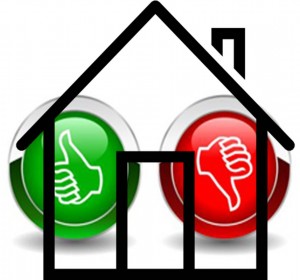 It’s actually impossible for a home to fail a home inspection.
It’s actually impossible for a home to fail a home inspection.
Yes, you read that correctly.
A home inspection is – much like an annual physical with your doctor – an examination of a house.
So there is no pass/fail per se.
The main purpose is to spell out the overall health of the home and identify what repairs are needed.
Based on our years of inspecting in and around Osceola County, we’ve come with a list of those fixes that should be addressed immediately as well as other repairs that shouldn’t deter you from buying or selling a home.
We’ve put together a range of costs for each. These costs are only estimates and you should get bids from several licensed contractors before you begin any work.
Issues to address immediately include problems identified in areas like your roof, ceilings and foundation. Addressing them now avoids problems and dangers in the future.
Repair the roof: $730 to $1,100; roofing problems include leaks, pest infestations and missing shingles; if the roof is nearing the end of its life, then buyer or seller should plan on investing in a new one.
Replace the water heater: $870 to $1,100; water heaters in service 10 years or more cost more to operate and could experience plumbing and heating problems.
Repair a foundation: $3,580 to $5,400; the safety of your home depends, literally, on its foundation so be sure it doesn’t need piering or slabjacking to get it upright again, as these will cost more than fixing cracks.
Repairs to do over time include smaller problems – the air conditioning not working correctly, leaks in windows or doors and cracks in the flooring – will be identified because home-inspection reports are so extensive. Certainly they’ll need to be addressed at some point but dangerous or potentially so.
Repair an air conditioning system: $350 to $510; strange noises and less cool air than usual might be easy repairs, but inefficient duct systems or problems with the unit itself that may force replacement.
Repair one or more windows: $310 to $450; window cracks, leaks and loose panes are easy fixes, but faulty windows eventually need to be replaced; you home inspector will tell you how bad the issue is in their report.
Repair a door: $240 to $350; a few quick stops at the hardware store are easy fixes for a bad door knob, lock or leaks but it fits improperly or has extensive cracks, it might need to be replaced.
Clean ducts and vents: $320 to $430; dirty ducts and vents can decrease the amount of air circulating in your home; making it tough to room temperatures.
To be sure, a home inspection will not reveal the actual value of a home (you need to hire an appraiser for valuation) or its compliance to standard building codes (that’s the role of a building inspector). But it does give you a clear picture of the relative wellbeing of the home.
We’re committed to delivering thorough and honest reports on your property’s health. We’re BUY YOUR SIDE, serving all of Osceola County: Kissimmee, Saint Cloud, Poinciana and surrounding areas. Call: 407.780.0911
Read More
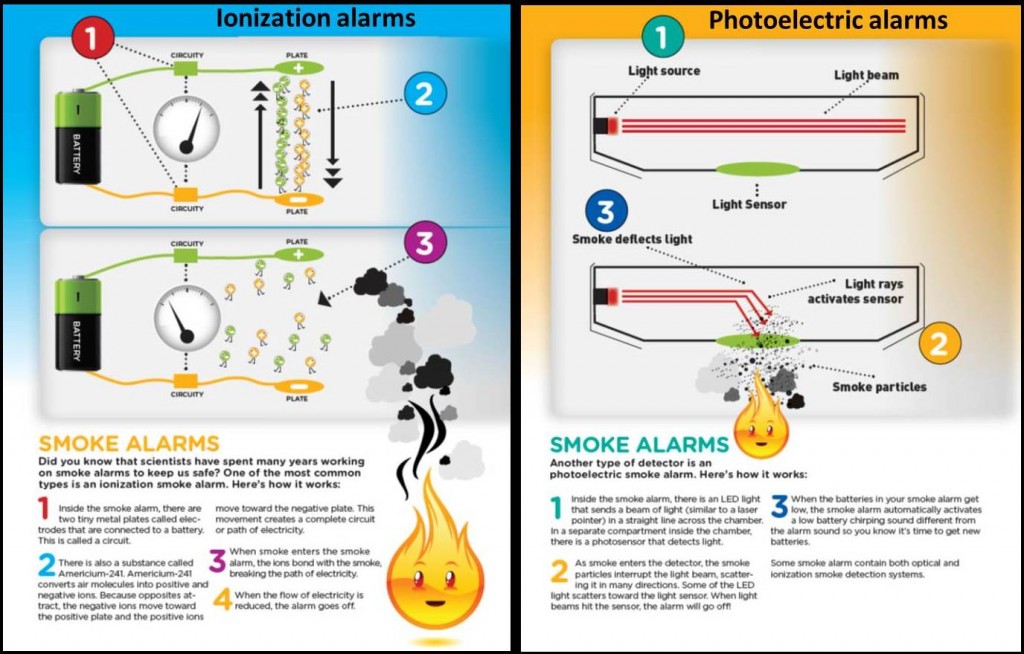 Home smoke alarms probably get our collective attention twice a year – when it’s time to change the clocks, we’re urged to change the batteries in them.
Home smoke alarms probably get our collective attention twice a year – when it’s time to change the clocks, we’re urged to change the batteries in them.
As you know, BUY YOUR SIDE Home Inspections believes that regular maintenance of homes is important – whether you’re buying, selling or staying put. So, we thought we’d address smoke alarm maintenance and whether or not a smoke alarm will save you in the event of fire.
REPLACE SMOKE ALARMS REGULARLY
According to the National Fire Protection Association (NFPA ) and the US Fire Administration, smoke alarms should be replaced every eight to ten years. Although some newer alarms already have production dates stamped inside of the alarm, both agencies recommend writing your date of purchase with a marker on the inside of your alarm so you will know when to replace it.
If you can’t find a date on the back, assume it’s over ten years old and replace it.
NOTE: Some homes have a dual carbon monoxide/smoke detector. Carbon monoxide (CO) alarms are good for only about six years, so your best bet is to avoid the smoke alarm/CO alarm combo units. Buy individual alarms and follow the manufacturer’s instructions for timely replacement of each type.
INSTALL THE RIGHT TECHNOLOGY
There are many different brands of smoke alarms available on the market but they fall under two basic types: ionization and photoelectric.
Ionization alarms sound more quickly when a flaming, fast moving fire occurs. This type of smoke alarm has a small amount of radioactive material between two electrically charged plates, which ionizes the air and causes current to flow between the plates. When smoke enters the chamber, it disrupts the flow of ions, thus reducing the flow of current and activating the alarm.
Photoelectric alarms are quicker at sensing smoky, smoldering fires. These alarms aim a light source into a sensing chamber at an angle away from the sensor. Smoke enters the chamber, reflecting light onto the light sensor; triggering the alarm.
Because these two types of smoke alarms are better at detecting distinctly different yet potentially fatal fires – and because it’s impossible to predict what type of fire might start in a home – the two fire safety organizations recommend the installation of both ionization and photoelectric smoke alarms. There are dual smoke alarms that combine ionization and photoelectric into single units.
There are also alarms made specifically to meet the needs of people with hearing disabilities. These alarms may use strobe lights that flash and/or vibrate to assist in alerting those who are unable to hear standard smoke alarms when they sound.
LOCATE AND INSTALL SMOKE ALARMS PROPERLY
At a minimum, smoke alarms should be installed inside of each bedroom, and in at least one common area on every level including the garage, basement and attic.
Always follow the manufacturer’s installation instructions so they operate effectively. The best placement for a smoke alarm is usually on the ceiling, in the middle of the room. If you’re going to install the smoke alarm on a wall, or on the ceiling near a wall, don’t place it too close to the corner. Most manufacturers recommend locating smoke alarms at least 4″ away from corners. When installing smoke alarms on a sloped or peaked ceiling, they should be within 6’ horizontal fee of the peak and well clear of the apex.
MOUNT WIRELESS SMOKE ALARMS FOR OLDER HOMES
Many homes built within the last twenty years have interconnected, hardwired smoke alarms with battery backups. These hardwired systems may be either independent of or connected to security systems.
Usually, older homes just have only independent, battery operated smoke alarms. This set-up begs this question: “if a smoke alarm sounds in the garage on one side of the house, will we hear it upstairs on the other?” Wireless smoke alarms communicate with each other just like interconnected hardwired smoke alarms; if one goes off, they all go off.
NOTE: To test if your existing smoke alarms are interconnected, hold down the test button and listen. If they’re online together, they will all sound at the same time or within a very brief delay between them.
Smoke alarms must be within their useful life, utilize technology that will activate in a variety of fires, be properly installed, and be adequately positioned can make all the difference of whether or not they will be effective when you most need them to be.
Read More







Follow Us!